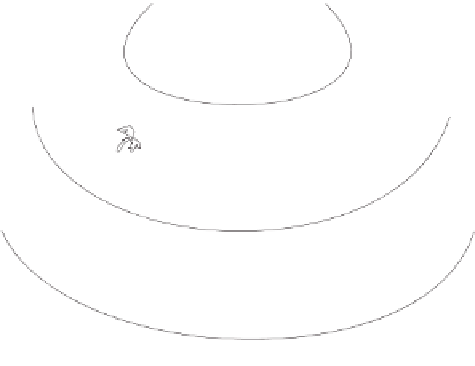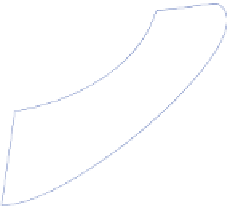Environmental Engineering Reference
In-Depth Information
This transport of heat occurs primarily as a result of a global exchange of air masses.
Major air circulations around the world pump the heat from the equator to the poles.
Gigantic circulation cells, called Hadley cells, develop (Figure 8.2). The earth's
rotation defl ects these currents. This in turn produces relatively stable winds that
for a long time were crucial for sailing ships. In the tropical waters north of the
equator a relatively stable and constant wind blows from the northeast. Unsurprisingly,
it is called the Northeast Trade Wind. In contrast, the Southeast Trade Wind blows
south of the equator.
Figure 8.2
Global circulation and origins of different winds.
Local infl uences exist in addition to the global wind currents. As a result of the
rotation of the earth, local areas of low and high pressure create wind movements
that rotate around the low pressure point. This rotation runs counterclockwise in the
Northern hemisphere and clockwise in the Southern hemisphere.
The so-called sea-land breeze occurs in areas near the coast. During the daytime the
radiation from the sun warms up the land and the air above it much more than the
ocean water. The warm air above the land rises up and colder air fl ows in from
the ocean. At night this cycle reverses as land cools off faster than the ocean.
Head winds also occur in the mountains and in polar regions with cold air streaming
down mountain slopes sometimes at very high wind speeds.
Around 2% of solar radiation in the world is converted into wind movement.
Therefore, the energy supplied by wind equates to a multiple of the primary energy

































































































































































































































































































































































